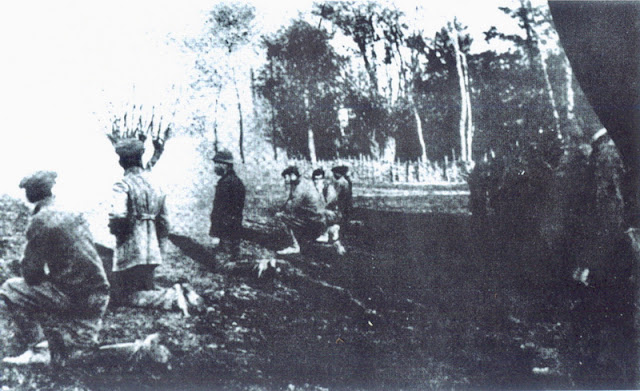Flame-throwing tanks of the 6th Marine Division opened fire on a hillside in Okinawa during a grueling battle. Japanese soldiers fought fiercely, hiding in caves to protect themselves from the onslaught of American troops. Japanese soldiers were burned to death in caves by American flamethrower tanks.
An American flame-thrower tank emits flames against Japanese positions during the Battle of Okinawa. An American flamethrower tank fires a volley of flames at Japanese positions on a hillside in Okinawa, Japan. An American flamethrower tank attacks Japanese troops. U.S. flame-thrower tanks poured fire on Japanese positions on a hillside in Okinawa in response to the fierce resistance Japanese troops had encountered since U.S. forces landed on Okinawa on March 31, 1945. The last fanatical resistance of the Japanese forces in Okinawa was crushed, and the main Japanese forces were destroyed on June 13, 1945.
On May 16, 1945, medium tanks equipped with flame-thrower tanks and 105mm howitzers slowly advanced along the ridge leading to the high ground of Shuri. Blocking their way in this broken terrain were the Okinawan burial bunkers that the Japanese had occupied, fortified, and formed into a system of mutually supporting pillboxes. This armored vanguard unit penetrated 182 meters into the enemy line after a day of intense fisticuffs, bringing the 77th Division as close as 457 meters to the northernmost point of Shuri.
On May 17, the American 77th Division's pre-dawn attack was a great success, surprising the Japanese and forcing them to surrender. The division had suffered tremendous casualties and gained favorable terrain, including the hills in its vicinity. Advancing alongside each other, they were incubated at the end of the line, only a few hundred meters away from Shuri and Iwami. The garrison was flanked by the defenders, but they showered the Japanese soldiers moving through the exposed land on the south side of the hill with large numbers of machine guns and mortars. The troops following the assault force used daylight hours to sweep the Japanese soldiers, sealing off caves and burial caches and neutralizing strong Japanese strongholds that had been bypassed in the early morning surprise operation.






























